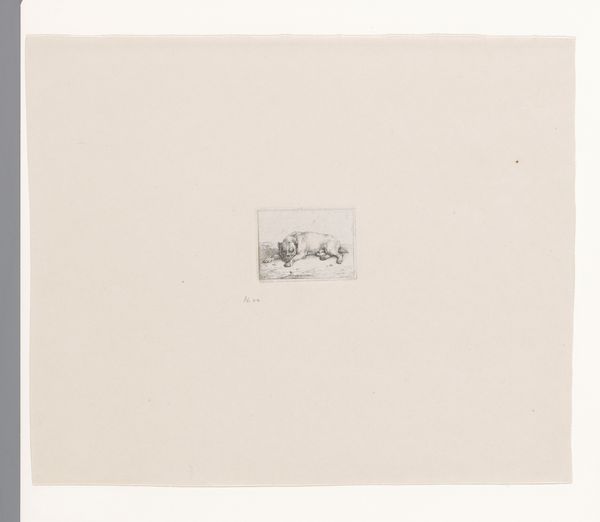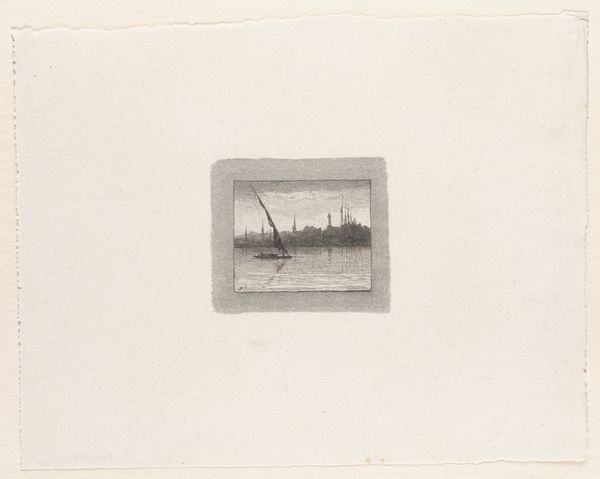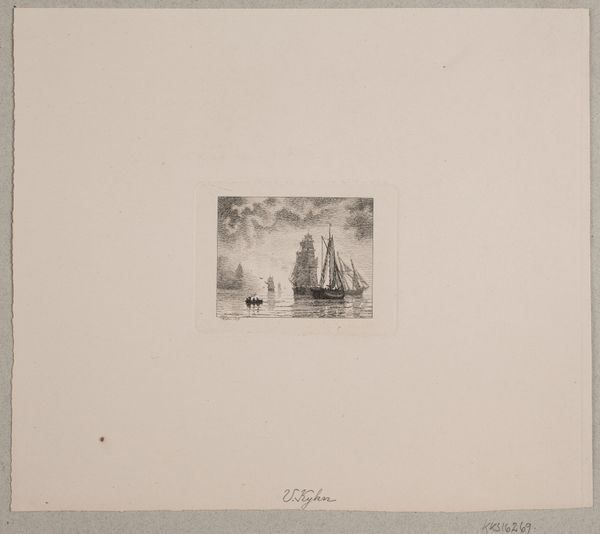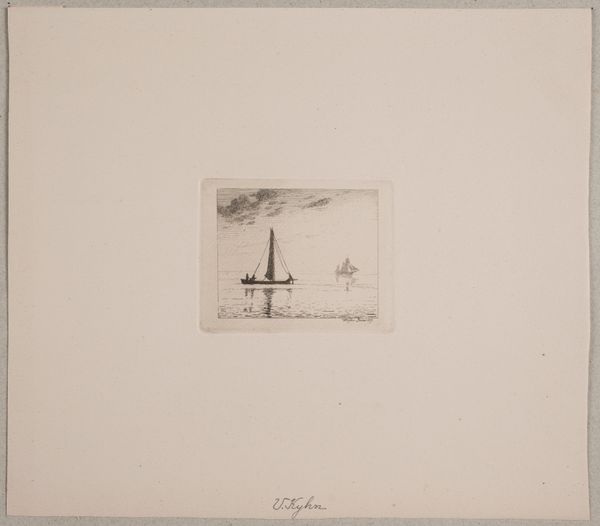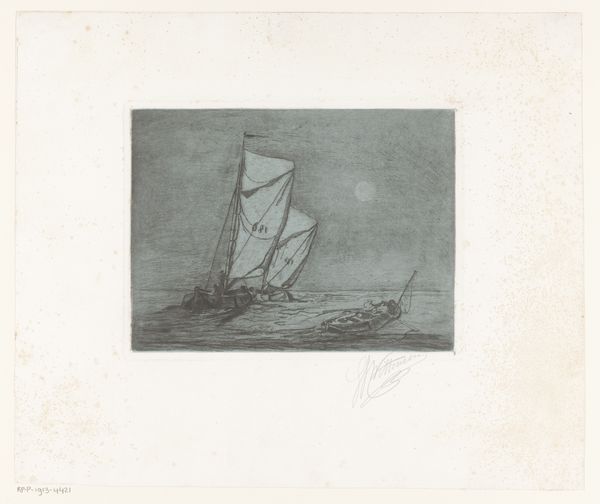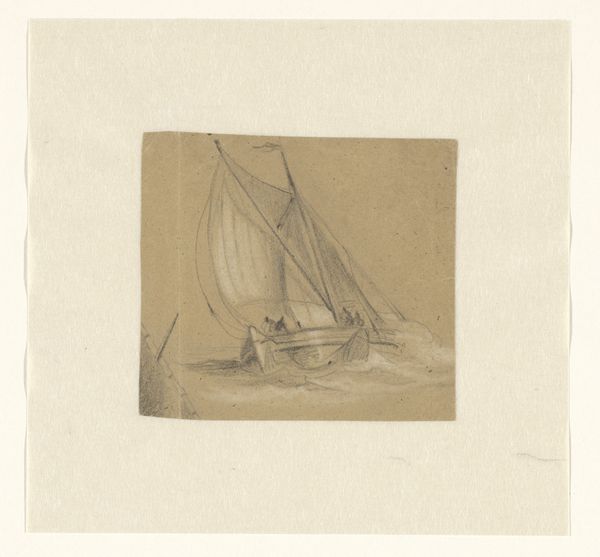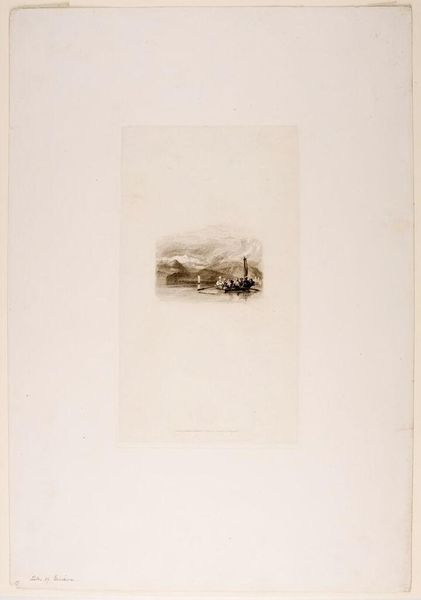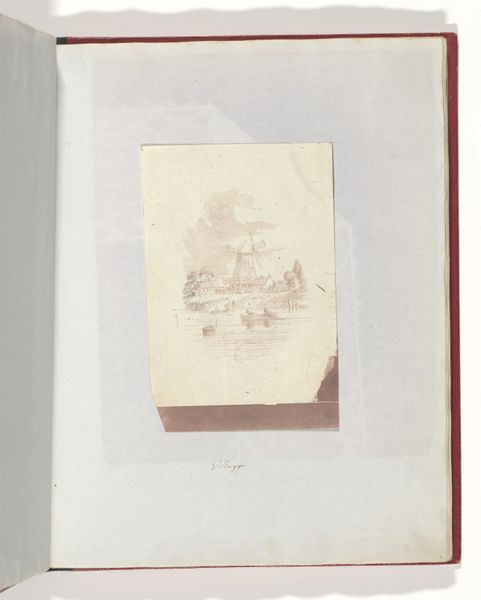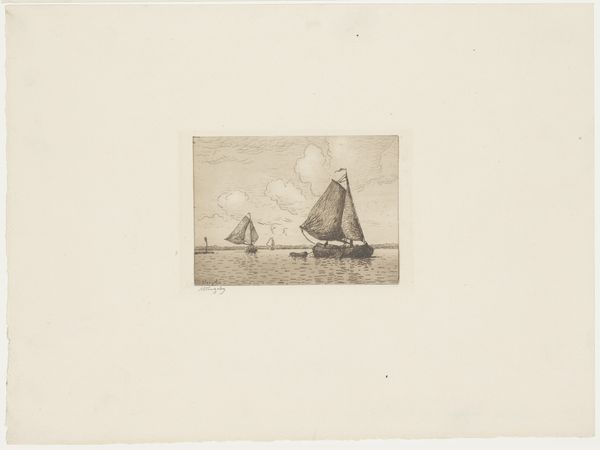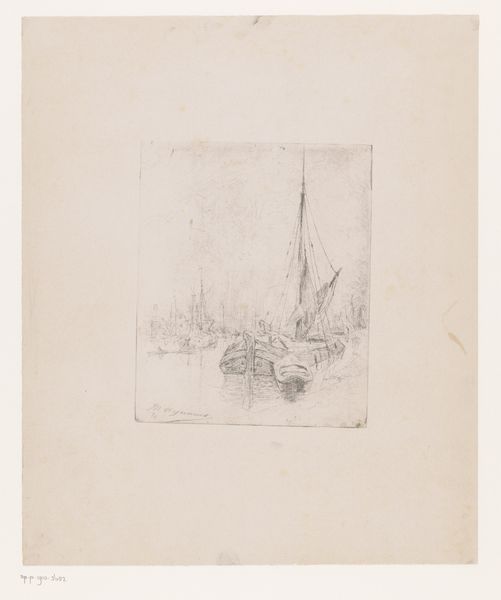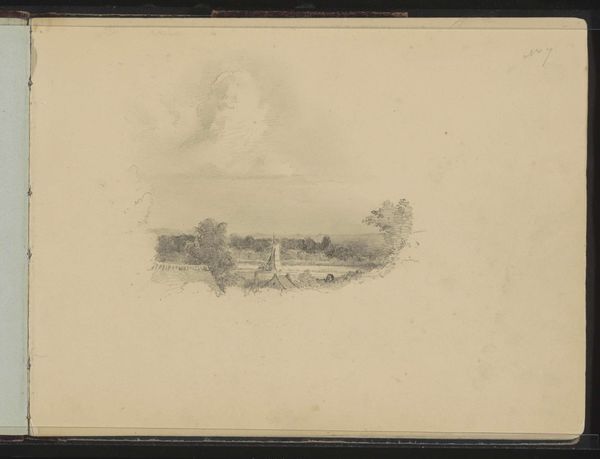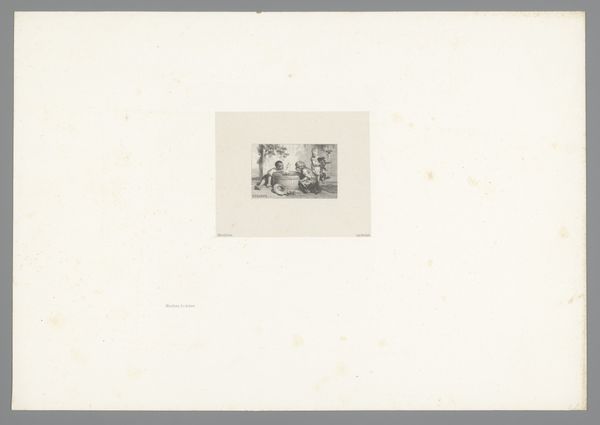
Dimensions: height 35 mm, width 34 mm
Copyright: Rijks Museum: Open Domain
Curator: Today we're looking at "Zeilende botter," a small etching on paper made sometime between 1870 and 1931. Willem Bastiaan Tholen is the artist, and it’s currently held in the Rijksmuseum. Editor: The most striking thing is the stark contrast between the density of the mark-making within the central image and the surrounding expanse of bare paper. It focuses your gaze, creating a kind of window. Curator: Precisely, and that framed image invites questions of labor and leisure within Dutch maritime culture of that time. The botter was a common fishing vessel, and its depiction here engages with themes of national identity. It invites us to examine how such imagery reinforced notions of Dutch resilience. Editor: The image has an almost ghostly quality. The layering of lines creates form while also suggesting movement—wind filling the sail, the boat slicing through the water. The reduction to essentially grayscale emphasizes these linear structures and textures, right? Curator: Exactly, and it also silences some historical narratives, creating an aestheticized image that romanticizes the very real labor undertaken on those boats. Where are the fishers themselves, the details of their lives, struggles, the impact of fisheries on their communities and environment? This speaks to a selective visual narrative. Editor: Perhaps. But isn't this extraction also part of the point? It boils down the scene to its essential geometries. We’re presented with an archetypal vessel, less concerned with documentary detail than with the poetics of form, you know? It gives me a certain nostalgic feeling. Curator: And it is *that* nostalgic gaze that warrants deconstruction, especially considering what those 'poetic forms' conceal or, perhaps more aptly, set sail from. We must be critical of such aesthetics, examining the sociopolitical winds fueling their creation. Editor: A fair point. There's a necessary tension between appreciating Tholen's mastery of technique and questioning the historical context within which it was made and viewed. Curator: Yes. The act of observation and understanding asks that we remember to look deeper and critically consider our own relationship to that imagery. Editor: Indeed. By visually unpacking Tholen's technique we bring to the surface essential issues from the historical realities from which this image was formed.
Comments
No comments
Be the first to comment and join the conversation on the ultimate creative platform.
